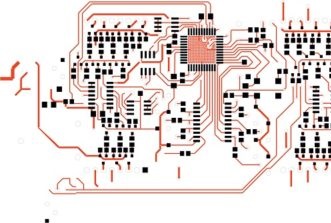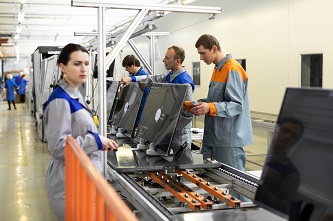This website uses cookies so that we can provide you with the best user experience possible. Cookie information is stored in your browser and performs functions such as recognising you when you return to our website and helping our team to understand which sections of the website you find most interesting and useful.
Global Robot End Effector Market Set for Rapid Growth – Insight Partners Study
The global robot end-effector market is projected to reach $13.76 billion by 2031, according to a new report from The Insight Partners. Growth is being fueled by the scaling of industrial robotics across manufacturing, the rising adoption of collaborative robots, or “cobots,” among SMEs, and the expanding automotive sector.
For eeNews Europe readers, the findings provide a glance at how robotics adoption is evolving across Europe’s core industries, from automotive and electronics to healthcare, where demand for high-performance end effectors is climbing rapidly.
Robot End-Effectors
Robot end-effectors are the tools or devices attached to the end of a robotic arm that interact directly with the environment or perform a specific task. They are sometimes referred to as the robot’s “hands,” but they are not limited to working in that way. They can take many forms depending on the application. End-effectors such as grippers, tools, and sensors are used for manipulation, processing, interaction, measurement, and inspection.
Cobots Driving SME Adoption
The Insight Partners report points to small and medium-sized enterprises as a major growth engine. SMEs are embracing cobots for their cost-effectiveness, intuitive programming, and ease of integration compared with traditional robots, which typically require heavy upfront investment and complex setup. This trend is particularly strong in sectors such as automotive, where automation is central to welding, painting, and EV assembly.
According to the International Federation of Robotics (IFR), more than 4.28 million robots were in operation globally as of September 2024—a 10% rise year-on-year—illustrating the momentum behind this shift.
Regional Momentum and Industry Moves
The report highlights North America as an early leader in end-effector adoption, thanks to its strong industrial base and focus on smart manufacturing practices. Key industries including automotive, aerospace, and electronics are turning to advanced robotic arms to boost precision and safety.
Europe is also active. In November 2024, Schaeffler partnered with Agility Robotics to deploy humanoid robots globally by 2030, while Figure AI launched its “Figure 02” humanoid robot with five-fingered hands capable of lifting up to 25 kg—already tested at BMW’s South Carolina plant. These developments showcase how humanoid robots equipped with advanced end effectors are entering mainstream production environments.
Asia Pacific, meanwhile, held the largest market share in 2024, reinforcing its dominance in robotics-driven industries such as automotive and electronics.
Outlook
The Insight Partners concludes that the convergence of SME adoption, OEM innovation, and automotive demand is accelerating global market growth. Government-backed initiatives like NIST’s Measurement Science for Manufacturing Robotics (MSMR) are further supporting the rollout of cobots and advanced end effectors.














